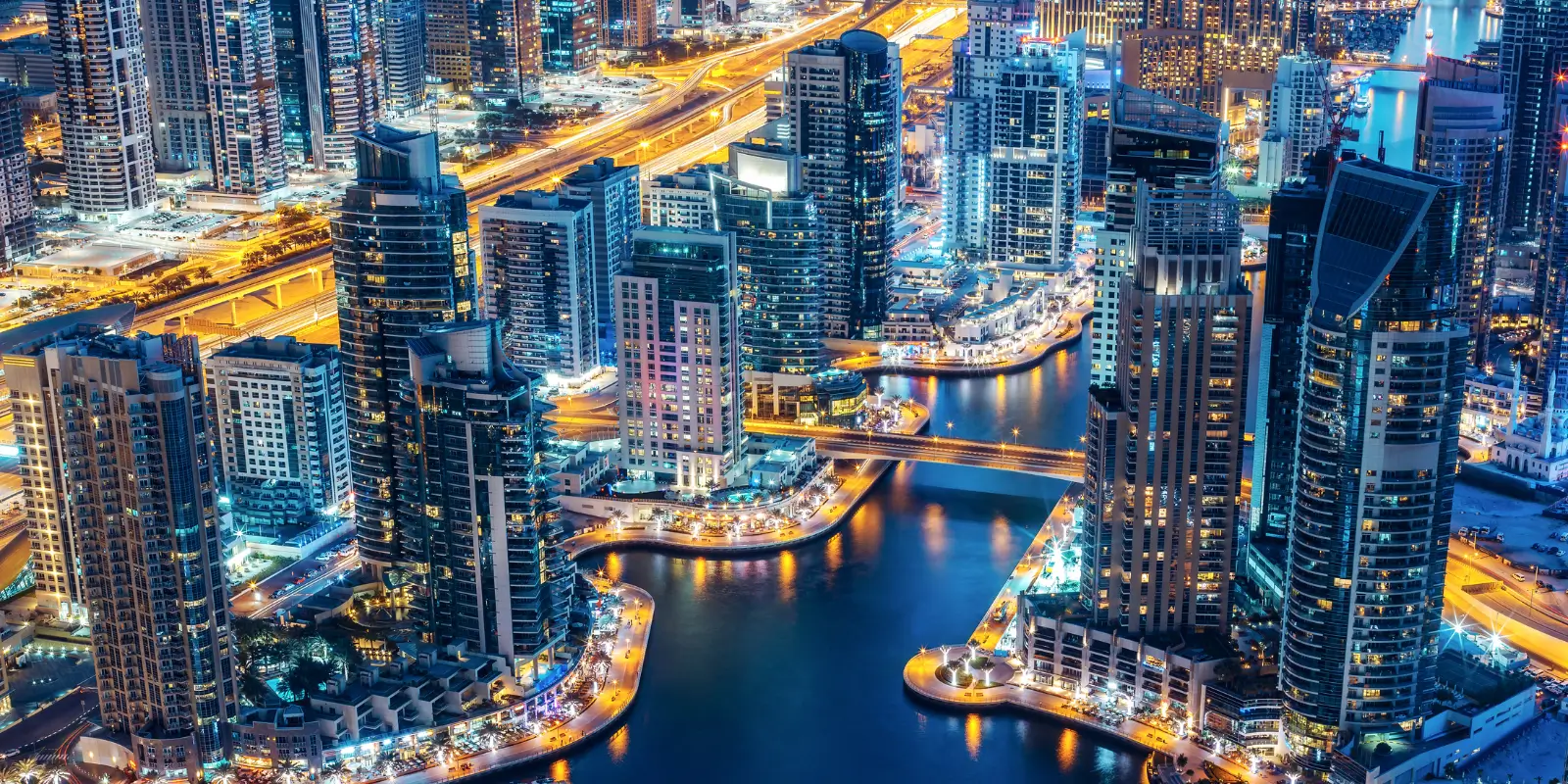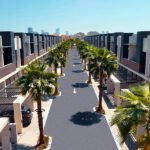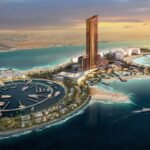Now Reading: UAE Real Estate: 7 Investor Risks to Avoid in the 2025 Cycle
-
01
UAE Real Estate: 7 Investor Risks to Avoid in the 2025 Cycle
UAE Real Estate: 7 Investor Risks to Avoid in the 2025 Cycle

Table of Contents
Investor Risks: The UAE real estate market, valued at AED 893 billion ($243.1 billion) with 331,300 transactions in 2024, remains a global investment hub, projecting 5-8% price growth and 5-11% rental yields in 2025, per skylineholding.com. Driven by a 5% population growth (12.5 million by 2025), infrastructure projects like Al Maktoum Airport, and investor-friendly policies such as the Golden Visa, the market thrives, per gulfbusiness.com.
However, the current cycle, marked by a 34% surge in transaction values and 60% off-plan sales in 2024, presents risks that investors must navigate, per damacproperties.com. Below are seven critical risks to avoid in the UAE real estate market in 2025, their implications, and actionable steps for mitigation, ensuring compliance with the Dubai Land Department (DLD), Abu Dhabi’s Department of Municipalities and Transport (DMT), and Federal Tax Authority (FTA).
1. Oversupply and Rental Yield Compression
Description: With 182,000 new units expected by 2026, particularly in Dubai South and Mohammed Bin Rashid City, oversupply risks compressing rental yields, per spglobal.com. In 2024, 80% more units were completed compared to 2023, potentially reducing rents by 5-10% in oversupplied areas, per frontdemer.ae.
Implications: In JVC (apartments from AED 550,000, $149,700), yields may drop from 7-8.6% to 6-7%, per gulfbusiness.com. Slower capital appreciation (3-5% instead of 5-8%) could affect ROI in secondary markets, per internationalinvestment.biz.
Mitigation: Focus on high-demand areas like Dubai Marina (6-7% yields) or Yas Island (6.5-7% yields), where occupancy remains 85-95%, per gulfbusiness.com. Verify supply projections via DLD’s Building Intelligence platform and consult RERA-registered brokers.
2. Economic and Geopolitical Volatility
Description: The UAE’s economy, contributing 7.8% to GDP from real estate, remains sensitive to global economic downturns, oil price fluctuations, and regional conflicts, per investasian.com. Geopolitical tensions in the Middle East could deter investors, despite Dubai’s safe-haven status, per spglobal.com.
Implications: A global recession could reduce foreign investment (30% of 2024 transactions), impacting luxury markets like Palm Jumeirah (villas from AED 12 million, $3.27 million), with yields dropping from 5-7% to 4-6%, per properties.emaar.com. Oil price drops could slow Abu Dhabi’s market (5-7% yields), per skylineholding.com.
Mitigation: Monitor GDP growth (4-5% projected for 2025) and oil price trends via UAE Central Bank reports. Diversify investments across emirates like Ras Al Khaimah (8-9% yields) and hedge with REITs (6-8% dividends), per kaizenams.com. Use DLD-registered brokers.
3. Interest Rate Sensitivity
Description: Global interest rate hikes in 2025, aimed at curbing inflation, increase borrowing costs for investors relying on mortgages, per frontdemer.ae. UAE banks’ exposure to real estate loans has dropped to 14% from 20%, signaling tighter lending, per sandsofwealth.com.
Implications: Higher mortgage rates (e.g., 5-6% vs. 4% in 2024) could reduce cash flow for investors in Dubai South (apartments from AED 800,000, $217,600), lowering net yields from 6-8% to 5-7%, per gulfbusiness.com. Reduced buyer demand may slow sales, per spglobal.com.
Mitigation: Opt for cash purchases or lock in fixed-rate mortgages. Focus on affordable areas like Al Reef (7-8% yields) with lower entry costs. Verify financing terms with DLD-registered brokers and retain loan records for FTA audits.
4. Regulatory and AML Compliance Costs
Description: Post-FATF Grey List removal in April 2024, enhanced AML/KYC requirements mandate due diligence for transactions above AED 5 million, per gtlaw.com. Non-compliance penalties reach AED 500,000, increasing costs for luxury investments, per natlawreview.com.
Implications: Compliance costs (2-3% of transaction value) could reduce net yields for Palm Jumeirah villas (5-7% to 4.8-6.7%) or Business Bay apartments (6-7% to 5.7-6.7%), per gulfbusiness.com. Delays in KYC verification may slow closings, per internationalinvestment.biz.
Mitigation: Use DLD-registered brokers and licensed virtual asset providers for crypto payments. Verify tenant/buyer KYC and retain records for FTA audits. Confirm compliance with DLD or DMT for freehold zones, per gtlaw.com.
5. Project Delays in Off-Plan Investments
Description: Off-plan properties, comprising 60.7% of 2024 transactions, face risks of construction delays due to labor shortages or developer financial issues, per qbd.ae. Delays of 6-12 months were reported in 10% of 2024 projects, per spglobal.com.
Implications: Delayed handovers in projects like The Oasis (villas from AED 2.5 million, $680,700) could defer rental income (6-8% yields) and capital gains (15-25% by 2030), increasing carrying costs, per gulfbusiness.com. Investor confidence may wane, per internationalinvestment.biz.
Mitigation: Invest with RERA-registered developers like Emaar or DAMAC, verify escrow compliance via DLD, and review developer track records. Retain sales purchase agreements (SPAs) for legal recourse, per qbd.ae.
6. Currency Fluctuation Risks
Description: The AED’s peg to the USD shields local volatility, but foreign investors face currency risks when converting profits or rental income, per frontdemer.ae. A stronger USD in 2025 could erode returns for European or Asian investors, per skylineholding.com.
Implications: A 5% home currency depreciation could reduce ROI by 0.5-1% for investors in Dubai Marina (apartments from AED 1.4 million, $381,400), lowering effective yields from 6-7% to 5.5-6.5%, per gulfbusiness.com. Purchase costs may rise for foreign buyers, per sandsofwealth.com.
Mitigation: Hedge currency risk through financial advisors or invest during favorable exchange rates. Focus on high-yield areas like Al Marjan Island (8-9% yields) to offset losses. Retain transaction records for FTA compliance, per gtlaw.com.
7. Climate and Sustainability Regulatory Costs
Description: UAE’s Net-Zero 2050 goals drive mandates for green certifications (e.g., LEED, Estidama Pearl), increasing construction and maintenance costs by 5-10%, per sandsofwealth.com. Rising temperatures and water shortages pose long-term risks, per frontdemer.ae.
Implications: Non-compliant properties in areas like JVC (apartments from AED 550,000, $149,700) may face 5% value discounts, reducing yields from 7-8.6% to 6.5-8%, per gulfbusiness.com. Retrofits (AED 50,000-100,000) could cut ROI, per yallablog.ae.
Mitigation: Invest in sustainable projects like Masdar City (6-7% yields) or The Sustainable City (6-7% yields) with 5-10% price premiums, per sandsofwealth.com. Verify certifications with DLD or DMT and retain records for VAT recovery (5%, e.g., AED 25,000 on AED 500,000), per taxvisor.ae.
Why These Risks Matter
The UAE’s real estate market thrives on tourism (19 million visitors in 2024), infrastructure (AED 11.8 billion invested from 2018-2023), and foreign investment (30% of transactions), per gulfnews.com. However, oversupply, economic volatility, and regulatory changes threaten yields and capital gains, per spglobal.com.
Posts on X highlight concerns about luxury oversupply and AML costs, per @jobxdubai. Mitigating these risks ensures investors capitalize on high-demand areas (e.g., Dubai Marina, Yas Island) and maintain 5-11% yields, per gulfbusiness.com.
Tax Tools for American Investors
U.S.-UAE DTA: Credit UAE taxes via IRS Form 1118, preserving 10-15% returns, per immigrantinvest.com.
Zakat for Muslim Investors: Pay 2.5% Zakat on rental income (e.g., AED 3,000 on AED 120,000). Consult Islamic scholars, per taxvisor.ae.
VAT Recovery: Recover 5% input VAT on expenses (e.g., AED 25,000 on AED 500,000) for VAT-registered investors, per fintedu.com.
Market Outlook and Challenges
The UAE projects 5-8% price growth and 5-11% yields in 2025, per colife.ae. Risks include a potential 15% price correction in H2 2025 due to oversupply and global economic pressures, per thenationalnews.com. DLD’s escrow systems, RERA’s transparency, and AML compliance mitigate risks, per hausandhaus.com.
Conclusion
Investors in the UAE’s 2025 real estate cycle must avoid risks from oversupply, economic volatility, interest rate hikes, regulatory costs, project delays, currency fluctuations, and sustainability mandates. Focusing on high-demand areas, reputable developers, and sustainable projects, while ensuring DLD, DMT, and FTA compliance, safeguards 5-11% yields and 5-25% capital gains in this dynamic market. UAE Real Estate
read more : UAE Real Estate: 6 Rental Trends Landlords Should Track This Year






















